 Your new post is loading...
 Your new post is loading...
Internet Explorer 11 in Windows 8.1 introduced support for Professional Quality Video using Media Source Extensions (MSE) and Encrypted Media Extensions (EME). With Windows 10, Microsoft is announcing browser support for HTTP Live Streaming (HLS) and enhanced support for MPEG DASH in the new EdgeHTML rendering engine. These new features automate adaptive streaming, and make it very simple for Web sites to take advantage of professional quality video.
We are pleased to announce the launch of our Adaptive Media Streaming over HTTP/2 trial. We are inviting you to participate in order to help us gather important data.
The experimental HTTP version 2 protocol promises to improve the web browsing experience but what does it mean for HTTP-based media streaming technologies such as MPEG-DASH?
This is the presentation delivered at Akamai EDGE conference in Oct 2014 by Will Law and Nicolas Weil The presentation gives an overview of the genesis of the standard, differentiates it from legacy formats, examines its benefits in the OTT, broadcast and wireless industries and then demonstrates how simple it is to get DASH playback across devices . It highlights current deployments, reviews the status of the industry and gives an outlook for the next three years.
Let’s talk a bit about HTTP Adaptive streaming and GStreamer, what it is and how it works. Especially the implementation in GStreamer is not exactly trivial and can be a bit confusing at first sight.
If you’re just interested in knowing if GStreamer supports any HTTP adaptive streaming protocols and which you can stop after this paragraph: yes, and there are currently elements for handling HLS, MPEG DASH and Microsoft SmoothStreaming.
DASH’s Time Has Come By now, you’ve probably read enough to understand what DASH is and why it’s important. But let’s boil it down to the most important points: DASH is an adaptive bitrate streaming technology for delivering multimedia—i.e., video. It’s a codec- agnostic technology designed to partition and deliver congruent piecesofamultimediafiletoaclient,usingHTTP. Alongwith network conditions and other variables, the receiving device (such as a smartphone, tablet, set-top box, smart TV, or computer) dictates which “chunks”—each of which contains a different resolution and bitrate—to deliver to ensure uninterrupted play of the file as a whole. Of course, adaptive bitrate (ABR) streaming has been around for a while. If you ever watched a cat playing a piano and it got fuzzy for a few seconds, you experienced a version of ABR. But was it DASH doing the heavy lifting? Almost certainly not. That’s changing...
Via DASH Industry Forum
This article focuses on the live streaming DASH features enabled by Azure Media Service, and how they can be used to deliver live and video on demand adaptive streaming to Web browsers and new devices of all types, which are adding support for the DASH standard. DASH live streaming is now available for public preview, and will graduate to “general availability” with normal service level agreements after the preview period.
DASH output is a runtime option for all live and VOD streaming from Azure Media Services. A player can request a DASH Media Presentation Description manifest and compatible ISO Base Media File Format “Media Segments” just by including a DASH format tag in each URL request. The same files or live stream can be delivered in Microsoft Smooth Streaming, Apple HLS, or Adobe HDS by indicating any of those formats in the URL format tag. This enables the introduction of DASH to new browsers and devices while maintaining compatibility with legacy players and formats. The ability to dynamically package media segments in realtime is essential for low latency live streaming, as well as efficient multiplatform support.
Adobe Systems has made some upgrades to its Primetime Digital Rights Management platform that the software vendor said will bring its content protection service into the world of browser-based video.
Adobe announced Primetime DRM is now available on apps without a Flash Player plugin, as well as via HTML5 on major Web browsers. The changes are significant as they represent Adobe's shift away from its Flash-player approach in favor of using emerging HTML5 extensions that support video embedded directly into Web pages.
What the online video industry needs is simple standards for reaching all viewers. But when have standards ever simplified online video?
Proprietary technologies are inherently bad in the video space, except when they’re not. Standards inevitably simplify matters, except when they don’t. So it is with Flash, and its obvious successors, the Media Source Extensions (MSE), Encrypted Media Extensions (EME), and Dynamic Adaptive Streaming via HTTP (DASH).
MSE/EME/DASH are the standards that will enable web publishers to replace Flash in their playback architectures. MSE eliminates two of HTML5's most critical limitations by bringing standards-based adaptive streaming and live delivery to HTML5 browsers and devices. EME brings a single encryption API to HTML5 browsers, providing digital rights management (DRM), addressing another former deficit. DASH is the standards-based file format that will actually deliver the streams. The vision is one set of cache-friendly streams in DASH format that can play on any MSE/EME-compatible computer or device, which will replace the two streams most producers create today for Flash and HLS playback.
For those of us working to develop MPEG-DASH, Apple’s recent support of the W3C’s Media Source Extensions (MSE) API in Safari on OS X Yosemite is great news. MSE and DASH have a complementary relationship, and expanded support for MSE will make it much easier for publishers to adopt DASH.
While MSE itself is designed to be media container format neutral, one of the primary container format recommendations made in the specification is compatible with the ISO Base Media File Format (ISO BMFF)“fragmented MP4” profile of MPEG-DASH. At this time, MSE implementations in most desktop browsers (Chrome, IE, Safari) are available and support the ISO BMFF container. Firefox is also working on compatible implementations, which are already partially available in their development branches.
One of the plugins that Microsoft released is Microsoft Smooth Streaming with OSMF Azure Plugin for Media MPEG-DASH support . We can extend the capabilities of OSMF (Open Source Media Framework for Adobe) adding Microsoft Smooth Streaming to players using this technology, as well as playback on Strobe Media Playback (SMP).
Via DASH Industry Forum
Low latency with HTTP-streaming (segment-based) technologies is a challenge. In particular MPEG-DASH is gaining adoption among international industry consortiums such as DVB with DVB DASH or ETSI with HbbTV 2.0 (not published yet), with a growing focus on live use-cases. For such applications, latency is a concern. In this article, we will show you how the GPAC team studied the impact on the overhead of HD streaming with very low latency using MPEG-DASH and demonstrated that overhead on the transport side is negligible, in the order of 1%. At 1% overhead, we could demonstrate a 240ms latency. With such a low latency, interactive or bidirectional applications such as video conferencing or live streaming with voting become possible. Of course such low latency can only be safely reproduced in local network conditions. Yet it shows that the latency is not due to the MPEG-DASH technology but rather to the network conditions. It also shows that a few technical choices can dramatically reduce the latency. All the tools used for this demonstration are available as free software.
Via DASH Industry Forum
We’re excited to announce an open source video player framework to make online video and video monetization with the IMA SDK easier than ever. The Google Media Framework (GMF) is available for iOS and Android, and we have a Video.js plugin for web based video players.
MF Features - Ready to use Video player for your apps and websites
- Demo apps include production ready integrations with the IMA ads SDK
- GMF is free and open source, so can be customized to meet your specific needs (Send us a pull request!)
- Easily customize the UI color and add or remove buttons
- Support for iOS 7+ and Android 4.1+
How is DASH different from competing video standards. It's open, and for broadcasters that's a big factor. At the recent Streaming Media East conference, Jeff Tapper, chief architect at Digital Primates, taught attendees how to build a DASH player, and also why DASH stands apart. "The real key differentiator of DASH, as opposed to any of the other HTTP streaming formats, is it's an open standard. HLS, HDS, Smooth Streaming: They're all owned by one company," Tapper said. "Some of them have becomede facto standards on their own, but the more I work with broadcasters and people who are used to open standards like AM and FM and UHF and VHF -- these are standards that everybody agrees on. The broadcasting world loves standards."
Via DASH Industry Forum
|
Four years ago, we wrote about YouTube’s early support for the HTML5 <video> tag and how it performed compared to Flash. At the time, there were limitations that held it back from becoming our preferred platform for video delivery. Most critically, HTML5 lacked support for Adaptive Bitrate (ABR) that lets us show you more videos with less buffering.
Over the last four years, we’ve worked with browser vendors and the broader community to close those gaps, and now, YouTube uses HTML5 <video> by default in Chrome, IE 11, Safari 8 and in beta versions of Firefox.
The first commercial deployments of version 2.0 of the hybrid broadcast/broadband standard HbbTV are now likely to surface in the second half of 2015, with mainstream adoption taking place the year after, according to the HbbTV Association – currently holding its annual Symposium in Paris.
Proposed features for HbbTV 2.0 include improved support for HTML-5, push-VOD, ad insertion, HEVC video and MPEG-Dash – plus the introduction of companion screen app-launching and synchronisation. It had been hoped the specification would be nailed down around half-way through 2014, but Kirk Edwardson, co-chair of the HbbTV Marketing Group, said that 2.0 was still moving through ratification and final approval.
“Late this year/Q1 next year, we should be into final ratification, and starting then to turn that over to commercial suppliers […] to start to implement,” he said. “So I think we should start seeing our first 2.0 services and devices in the second half of 2015. 2016 is probably where you’ll see it really blossom.”
An intriguing set of new capabilities for bringing IP content to set-top boxes is coming into focus as a result of the inclusion of the GStreamer multimedia framework in the protocol stack endorsed by developers of the Reference Design Kit platform for next-gen devices.
Fluendo’s GStreamer-based Oneplay platform opens the door to building rich applications on a framework that supports playback in Linux, Windows, MAC OS X, Android and iOS environments from video streamed over any of three leading adaptive bitrate (ABR) formats, including HLS (HTTP Live Streaming), Microsoft Smooth and MPEG DASH adaptive bitrate formats.
Brightcove now supports transcoding video into the MPEG-DASH format. Support is also available for MPEG-DASH encrypted with Common Encryption, allowing multiple DRM systems to playback a single source asset. This topic provides an overview of the steps required to publish and play DASH content through Video Cloud. Dynamic Adaptive Streaming over HTTP (DASH), also known as MPEG-DASH, is an adaptive bitrate streaming technique that enables high quality streaming of media content over the Internet delivered from conventional HTTP web servers. Similar to Apple's HTTP Live Streaming (HLS) solution, MPEG-DASH works by breaking the content into a sequence of small HTTP-based file segments, each segment containing a short interval of playback time of a content that is potentially many hours in duration, such as a movie or the live broadcast of a sports event. The content is made available at a variety of different bit rates and as the content is played back by an MPEG-DASH client, the client automatically selects from the alternatives the next segment to download and play back based on current network conditions.
This year the EBU BroadThinking Conference was sounding like a holistic swirl, a milestone in the trend of technology to define sets that are greater than the sum of their parts, through creative evolution. « Where Broadcast Meets BroadBand », you get some interesting fusion effect occurring and diluting the traditional boundaries of the screens, with the handheld devices being part of the big screen experience or extending it rather than trying to scalp it, in an environment where all the devices converge towards a restricted set of standards rather than tracing their own line.
While we by default think that standardization kills creativity, events like BroadThinking show that it’s the opposite: if we gather energies to solve common problems together, we can both come up with a more evolved solution and concentrate on what’s important past the pixel grid: the user experience, so consistent across screens that you forget there’s more than one screen involved.
Internet Explorer on Windows Phone 8.1 adds new media features that greatly expand its support for HTML5 audio and video. Audio and video elements are now fully supported, including inline playback of video content, and adaptive streaming based on the latest Web specifications is supported as well. These new features provide Web site developers the tools they need to provide compelling media experiences, and make IE an ideal browser for mobile media applications.
Now Internet Explorer on Windows Phone 8.1 supports Media Source Extensions as well. With it, sites will be able to deliver adaptive streaming videos using the same MPEG-DASH framework to Windows Phone 8.1 devices.
The Windows Phone 8, Windows 8.1 and Windows Phone 8.1 Applications for Step 3 support the following formats:
- Windows: WMV, MP4, MPEG2-TS, Smooth Streaming and MPEG DASH
- Windows Phone : WMV, MP4, Smooth Streaming and MPEG DASH
Even though users will be able to let NPAPI plug-ins run by default in January, we encourage developers to migrate of off NPAPI as soon as possible. Support for NPAPI will be completely removed from Chrome in a future release, probably by the end of 2014.
The ability to adapt media streaming to an individual consumer is critical in delivering high-quality content to a large audience. In the past this capability has been provided by technologies such as Silverlight’s smooth streaming and Quicktime’s HTTP live streaming. The Media Source Extensions to the HTML media element provide the capability to adapt a stream to an individual consumer on the modern web. Html5rocks has put together a great example of how to use the Media Source Extensions to implement some of these common use cases.
How can publishers ensure that their viewers are getting a TV-like experience with MPEG-DASH video? At the recent Streaming Forum conference in London, experts from Qualcomm and Bitmovin explained the finer points of QoE for DASH. "How can the DASH standard or standardized formats have to increase the quality, once there is some kind of metrics or logging functionality at the client that gives you means to communicate to another instance -- a logging server or whatever -- what's going on in the client side?" asked Christian Timmerer, CIO for Bitmovin. "In DASH there is an Annex D which is a normative definition of semantics for these metrics according to different observation points. If you have the DASH access client -- that basically is the one that issues the HTTP request -- and gets the responses and hands that over to what we call here a DASH-enabled application, which then in the end feeds into a display for rendering purposes or whatever."
Via DASH Industry Forum
Released in April 2012, MPEG DASH is the fastest tracked ISO standard ever released by the MPEG organization. A standard for the delivery of adaptive, segmented media, MPEG DASH seeks to be the unifying and enabling force for the OTT world as NTSC and PAL were for the broadcast world. The goals of this SuperSession are to expose attendees to the latest advances in DASH and to educate them on the deployments and usage taking place today.
Dr. Iraj Sodagar, President of the DASH Industry Forum and Chair of MPEG’s DASH subgroup will open with a summary of the State of Affairs of DASH - providing an update on the current state of DASH standardization in MPEG, including the features of MPEG-DASH 2nd edition as well as an overview of the DASH-IF latest activities and the status of DASH adoption by various consortia. Richard Leider from Google will present a talk on the large-scale use of DASH at YouTube, the world’s largest media property. Dr. Illgner, Director of the IRT and Chairman of the HbbTV Association will follow with a presentation on DASH and HbbTV. David Price, VP Business Development at Ericsson will moderate a panel on Deployments of DASH in HbbTV and LTE Broadcast. Dr. Thomas Stockhammer, editor of the DASH standard, will present an update on the DASH-AVC/264 interoperability guidelines as well as technologies under consideration for forth-coming updates to DASH. We’ll conclude with presentations of commercial deployments from Akamai, DTS, InsideSecure, Microsoft and Qualcomm.
Via DASH Industry Forum
Thanks to a joint effort of GPAC Licensing, EBU and DASH-IF, the open-source multimedia framework GPAC now has support for the DASH Industry Forum DASH AVC/264 profile… and beyond! In this article we are going show you how to setup GPAC for your OnDemand and Live contents. In a next article, we’ll see how to use GPAC to encrypt your data with support with the most common DRMs.
Via DASH Industry Forum
HTTP traffic has grown extensively driven by the immense growth of multimedia traffic. Nowadays, it could be seen as the protocol to deploy new services and applicationsand it is also heavily used by the industry, due to the fact that it provides advanced features for modern internet architectures. It is a content centric protocol that decouples names from addresses through DNSIt provides caching elements and middle boxes as reverse and forward proxiesIt enables scalable and flexible content deployment with content distribution, already leveraged by Content Distribution Networks (CDN) However, there is room for improvement as many services are still using HTTP/1.0 which was specified in May 1996, or are not using all the features of HTTP/1.1, such as persistent connections or pipelining. For example, already deployed HTTP streaming solutions such as Microsoft Smooth Streaming, Apple HTTP Live Streaming, and Adobe Dynamic Streaming do not use HTTP/1.1 pipelining with persistent connections, which could increase the streaming performance by up to 30 percent. Unfortunately, there are not many proxies that support HTTP/1.1 pipelining with persistent connections, due to the Head-of-Line (HoL) blocking problem where one pending response could possibly delay a range of other responses. The problem is that the proxy has to send in-order responses, which means that earlier arriving out-of-order responses will be blocked until the response that causes the HoL blocking arrives.
Via DASH Industry Forum
|
 Your new post is loading...
Your new post is loading...
 Your new post is loading...
Your new post is loading...





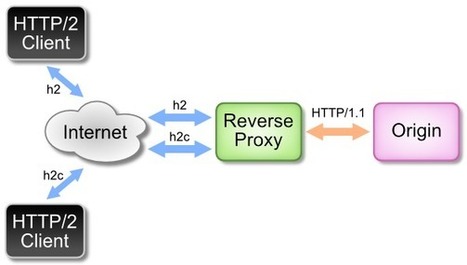
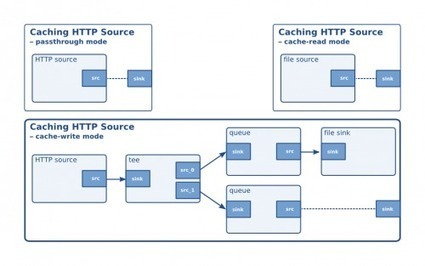
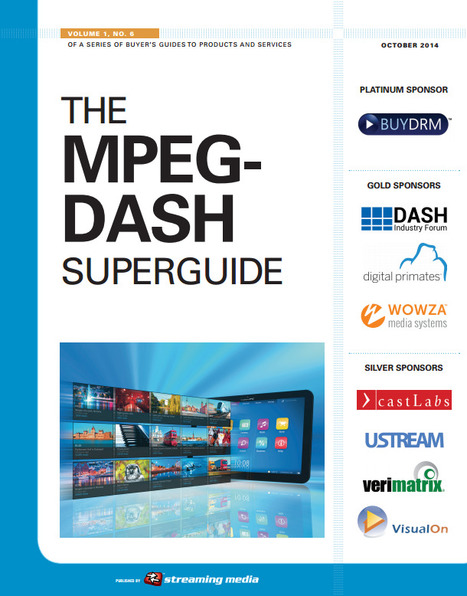







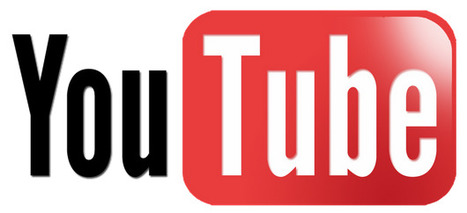
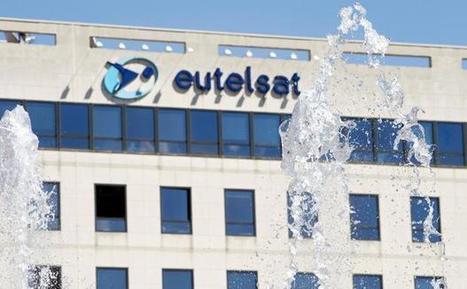
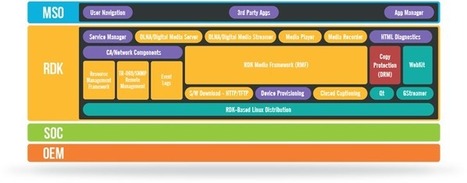

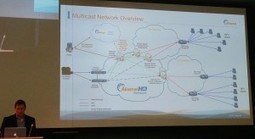

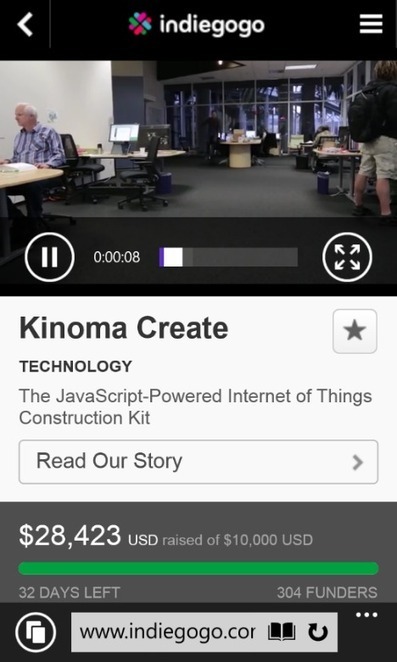
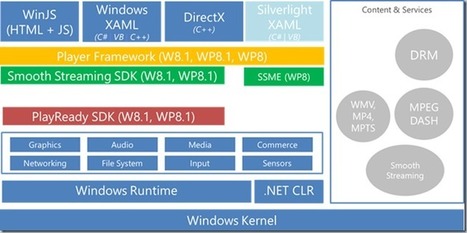
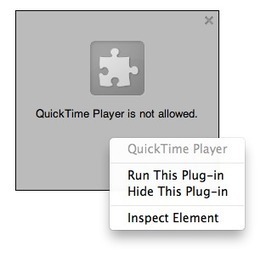

![[IBC2014] MPEG-DASH SuperSession | Video Breakthroughs | Scoop.it](https://img.scoop.it/VgAd3YC4DfQAJrCLULNhmTl72eJkfbmt4t8yenImKBVvK0kTmF0xjctABnaLJIm9)
![[IBC2014] DASH AVC/264 support in GPAC - GPAC Licensing | Video Breakthroughs | Scoop.it](https://img.scoop.it/Mmm3vFopvF0JWrs3mynSsTl72eJkfbmt4t8yenImKBVvK0kTmF0xjctABnaLJIm9)
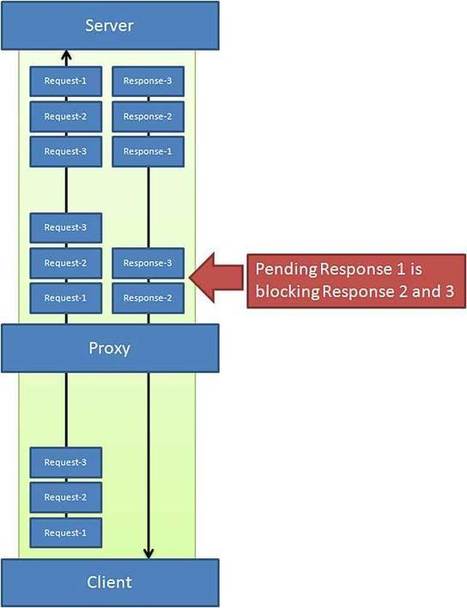





Microsoft is coming (back) after having lost the WMV battle and embraced open standards. Curisou to see whether they'll achieve in media what they did on XML opening (their) document formats.
Major step for Microsoft and an appreciated boost for DASH